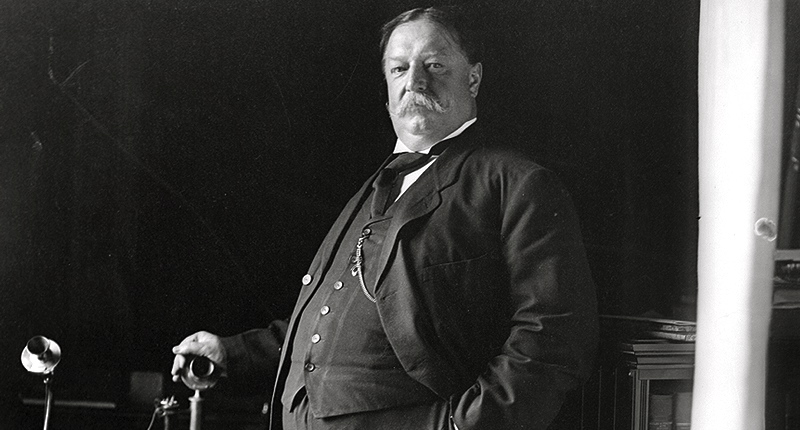Did you know that President Taft is responsible for defining “what is whiskey?”
E.H. Taylor with the help of John G. Carlisle, then the Secretary of the Treasury, enabled the passing of the Bottled in Bond Act of 1897 to help eliminate the widespread adulteration of whiskey. In 1906, during Teddy Roosevelt’s administration, the Pure Food and Drug Act was passed. This caused arguments between the two big whiskey producing factions, however. Harvey Wiley, the chief of the Department of Agriculture’s Bureau of Chemistry and a leader in passing of the Pure Food and Drug Act, believed that whiskey was a distilled spirit from grain that was aged in oak barrels with only pure water used to adjust the proof. The rectifiers, those whiskey producers that modified their product with neutral grain spirits, strongly disagreed with Wiley. So did the importers (Scotch, Irish and Canadian whiskeys) that would now have to label their products “imitation whiskey.”
Taft replaced Roosevelt as president in 1909, and decided to solve this problem. Taft always wanted to be a Supreme Court judge and made himself judge in the matter. During his six month deliberation, he was approached by both sides, including E. H. Taylor, Jr., John G. Carlisle, Isaac Wolfe Bernheim, and George Garvin Brown and many others. Finally on Dec 27th, 1909, Taft determined what could be called “straight whiskey,” what was “blended whiskey” and finally what was “imitation whiskey.” No one seemed happy, but everyone accepted it. Neutral grain whiskey had to made from grains, not molasses, as in rum, and bottles must have accurate labeling of their products. Here is an article from a Dec 27, 1909 newspaper…
https://news.google.com/newspapers…
Taft always seems to end up the brunt of jokes, but he is an important figure in whiskey’s history. Cheers to President Taft!!

